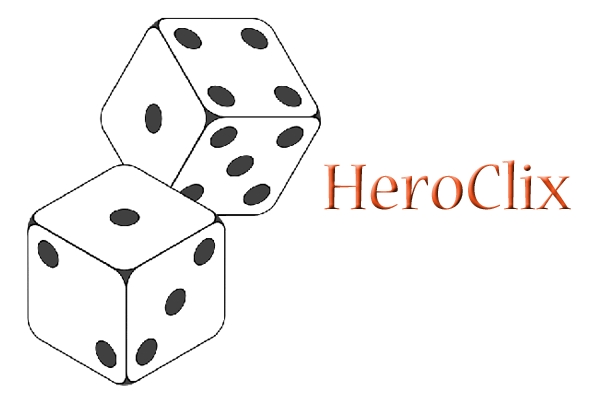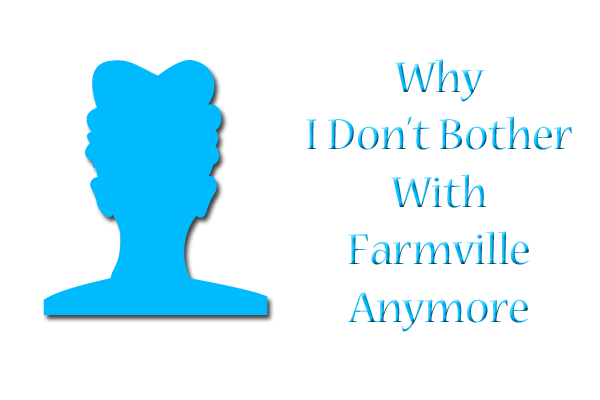
As I discussed in part 1 of this topic last Thursday, team support is made up of a conscientious playstyle and helpful powers. Part 1 showed how any player’s toon, no matter how damage-dealing, can be equipped with some team-support powers that boost effectiveness in large teams.
Today, I’m going to go through the natural team-support power trees available in the game–these are generally only available to Defenders, Controllers, Corruptors, and Masterminds.
Cold Domination
Available to: Controllers, Corruptors, Defenders
Best for: Debuffing enemies, buffing allies
Complete List of Powers
Cold Domination coats your allies in icy armor so that they can resist many types of damage; you can also slow your enemies’ movement, recharge rates, and even reduce their ability to damage you or your allies. It can be a great fit for an Ice Control Controller who wants to maintain thematic attacks, or really for any of the three builds to get some strong debuffs and buffs.
Dark Miasma/Darkness Affinity
Available to: Corruptors, Masterminds, Defenders; Controllers get Darkness Affinity instead
Best for: Healing, resurrecting, & hiding allies; debuffing and holding enemies
Dark Miasma Power List/Darkness Affinity Power List
Dark Miasma/Darkness Affinity does a little bit of everything–a little heal and rez, a little stealth, a little scaring the pants off your foes, and even a little damage thrown in there for good measure. You generally suck health or stats away from the bad guys and give it to yourself and your team around you. It’s a great power set for toons who need to be a backup healer for a team, since the heal and rez both require Accuracy checks to work, but I have also had success being the main healer for a team on a Dark Miasma Corruptor. Playing your Dark Miasma/Darkness Affinity character carefully (i.e., not running into the fray like a Tank–guilty as charged) will yield better results.
Empathy
Available to: Defenders, Controllers
Best for: Healing, resurrecting & buffing allies
Complete List of Powers
Empathy is the go-to set for healing, for the most part, but it’s not the only healing set out there. It is, however, a set that doesn’t require Accuracy checks for healing. You can boost your allies’ Regeneration and Recovery rates (how fast they heal and regain endurance), as well as buffing them against all types of damage, and helping them resist negative status effects like Sleeps and Holds.
Force Field
Available to: Defenders, Controllers, Masterminds
Best for: Buffing allies, controlling enemies
Complete List of Powers
Force Field ally buff powers help your allies avoid getting hit in the first place; the occasional foe captures, knockbacks, and disorients you can fire off help your teams survive big enemy spawns. It’s not one of the more popular choices, but I find that Force Field toons just make the rest of the team’s jobs easier. It’s easier to mow down enemies when you’re not taking as much damage, and with your enemies either struggling to get back on their feet or wandering around drunkenly, it’s a much shorter battle. You, as the Force Field toon, may not do a lot of damage, but you are invaluable to the team.
Kinetics
Available to: Defenders, Controllers, Corruptors
Best for: Healing and buffing allies; debuffing and controlling enemies
Complete List of Powers
This set, along with Empathy, is renowned for its buffs (Speed Boost and Increase Density, for instance), but it’s also a passable healing set as well as a debuff set. I don’t have a lot of experience with my Kinetics character so far, but in the midst of battle, she’s very efficient at pulling health off bosses (much like Dark Miasma). I also find that the debuffs, much like Force Field, make the team’s job of owning face much easier–it pulls away speed and Recovery rate from your enemies, weakening them.
Nature Affinity
Available to: Controllers, Corruptors, Defenders, Masterminds
Best for: Heals and buffs with a few debuffing effects
Complete List of Powers
This power set forms a perfect thematic set with Plant Control, since most of its powers are defensive and protective. LOTS of healing, lots of buffing, and just a bit of enemy damage through poison and holds means that Nature Affinity is a good alternative to Empathy, Radiation Emission, and Kinetics. (For instance, Lifegiving Spores giving both +Regen and +Recovery? AWESOME!)
Pain Domination
Available to: Corruptors, Masterminds
Best for: Healing with a large side of combat boosts and tricks.
Complete List of Powers
Pain Domination is like Empathy with teeth–you’ve still got heals and buffs, but there are some seriously powerful enemy debuffs hidden within those powers, too. This is a great set for a multitasking healer who doesn’t have time to heal/buff and damage/debuff in separate actions. (Conduit of Pain as a retaliatory Rez is hilarious!)
Poison
Available to: Controllers, Corruptors, Masterminds
Best for: Damaging enemies, healing and buffing (occasionally)
Complete List of Powers
Poison is best for somebody who doesn’t want or need to play healer much, but does want to debuff enemies in all sorts of ways, reducing defenses, resistances, speed, To-Hit, and even Regen rate. There are some healing/buffing powers, and even a limited Rez (Elixir of Life), but this is more in the capacity of “emergency healer” rather than “primary healer.” Bright side: the debuffs alone should make it pretty easy for a team to mow through enemies, rendering the healing less necessary anyway!
Radiation Emission
Available to: Defenders, Controllers, Corruptors
Best for: Healing, resurrecting, and buffing allies; debuffing enemies
Complete List of Powers
This power set is one-half of the popular Controller build called “Ill/Rad,” or Illusion Control/Radiation Emission. It’s a potent healing set, not quite on par with Empathy, but pretty close, from my estimation. I’ve seen Radiation Emission toons be the main healers of a team, or sometimes the secondary healer–it depends on your playstyle. They also are great for debuffing enemies, bringing down their ability to recharge, to move quickly, to damage you or your allies, or even be able to hit you at all. There’s also a surprising damaging attack late in the set, when all else fails!
Storm Summoning
Available to: Controllers, Corruptors, and Masterminds
Best for: Debuffing and controlling enemies; buffing and healing allies
Complete List of Powers
I’ve played a Storm Summoning Controller for a good while, and I find that the power set is best for locking enemies in place and debuffing them. Heals and buffs are few and far between, which means that your Storm Summoning toon won’t be the main healer, but you can be backup healer in a pinch. The storms are great for debuffing and knocking around your enemies, and it does a good bit of damage (at least, for a team-support character!). While they’re busy trying to recover from what you’ve done to them, your teammates are mowing ’em down. Fun fun!
Sonic Resonance
Available to: Defenders, Controllers, Corruptors
Best for: Buffing allies, debuffing enemies
Complete List of Powers
This is a pretty basic set, and not a very popular one…but I disagree with popular opinion. Played right, your Sonic Resonance toon can make enemies up to 50% less resistant to all types of damage. What does this mean? It means that your team mows through high-level bad guys as if they were your level, demolishing them in 5 seconds or less rather than standing there slashing for close to a minute. (I didn’t know just how much this would make a difference until I played a Sonic Resonance toon of my own, and saw how cool it was.) Debuffs aside, there are also some great team buffs for Defense and Damage Resistance, but you need to be in the middle of your team to make sure everybody is getting the benefit.
Thermal Radiation
Available to: Controllers, Corruptors, and Masterminds
Best for: Healing, resurrecting, and buffing allies; debuffing enemies
Complete List of Powers
This set is more like Empathy in that none of your healing powers require an Accuracy check; however, your buffs and debuffs make up more of your power tree. Thermal Radiation toons help their teams by keeping them shielded from harm, boosting their fighting abilities, and drawing stats away from your enemies. I don’t have a lot of experience with my Thermal Radiation character as of yet, but I like how her powers work so far–everything helps my teammates, even when I target an enemy!
Time Manipulation
Available to: Controllers, Defenders, Corruptors, and Masterminds
Best for: Recharging allies’ powers, boosting ToHit, healing, and enemy debuff
Complete List of Powers
Time Manip toons help with combat by boosting +Recharge, +Damage, and +ToHit, as well as bringing down enemy defenses and resistances…AND there’s healing, too! It’s an excellent power set for somebody who doesn’t just want to be “the healer” for a team, since these powers facilitate battle for the rest of the team. (Farsight and Temporal Selection are standout buffs, while Temporal Mending looks like a great Heal!)
Traps
Available to: Corruptors, Defenders, Masterminds
Best for: Enemy debuff and damage
Complete List of Powers
Traps aren’t necessarily your typical “team support” tree, but they can help a team weaken/get rid of very large mobs, which is supportive in its own way, much like Controllers’ Primary Power Sets. A Traps toon can’t do much healing, but the Force Field Generator and Triage Beacon can help in a pinch. Otherwise, you can pretty much pick your preferred flavor of debuff (Caltrops, Acid Mortar, Time Bomb, etc.), and run with it!
Trick Arrow
Available to: Controllers, Corruptors, Defenders, Masterminds
Best for: Enemy debuff
Complete List of Powers
Trick Arrows are purely for negatively affecting enemies, nothing else. Pull a Hawkeye and bring an arrow for all occasions–keep your enemy from flying, recharging their powers, recovering endurance, dealing damage, etc. Or you can use a couple of the arrow types to hold them in place, make them slip, or even put them to sleep! A toon with Trick Arrows can thus help a big team manage lots of enemies. (And, if you happen to be playing with a Fire toon, shoot a few Oil Slick Arrows for extra fun.)
Summary
Building a natural team support toon takes having a general idea of what you want to do with your team support powers, and which toon archetype you want to build on (Defender, Controller, Corruptor, Mastermind). But there are literally dozens of combinations that can make you able to support any team you work with!























